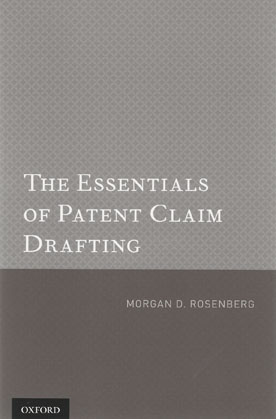
The claims of a patent application are, in many ways, the most important part of the application. The claims define the legal scope of patent protection granted by an issued patent, and also determine the course of the patent prosecution process.
A properly drafted patent claim must take into account technical breadth, legal strategy, and conformance with U.S. statutory law, U.S. Patent and Trademark Office guidelines, and over a hundred years of case law. The Essentials of Patent Claim Drafting is a practical guide to the drafting of patent claims in U.S. patent applications. The actual mechanics of assembling both basic and complex claims are covered in-depth from simple mechanical cases to complex chemical and pharmaceutical cases.
The emphasis is on the how-to of claim drafting, rather than on the history and theory of claiming. It contains multiple examples for all types of claims which a practitioner is likely to draft, and provides an easy reference for the drafting of particular types of claims. The Essentials of Patent Claim Drafting is written primarily for novice patent attorneys and patent agents, as well as law students and those studying for the Patent Bar Exam.